The era of E-commerce apps is sailing at the fastest rate, and consumers are shifting completely to online platforms. However, some retailers still follow traditional selling practices and are thinking about making a shift over to online mediums. But the competition in the existing players like Flipkart and Amazon is fierce, and they have still not moved to an online platform.
So, what is the solution to this? It is a unique and feature-rich E-commerce app development.
As an entrepreneur, you can cater to a large retail base who have not considered online platforms to sell their products. Therefore, in this article, we will uncover detailed dynamics related to E-commerce in the retail industry and inform you about your e-commerce app development.
Table of Contents
How Is E-commerce App Development The Face Of The Retailing Industry In The Future?
E-commerce revenue is growing at a stagnant rate around the world. Asia is the dominating player with $2000+ billion in revenue. Furthermore, America is behind Asia, although it is still half in the number followed by Australia and Africa.
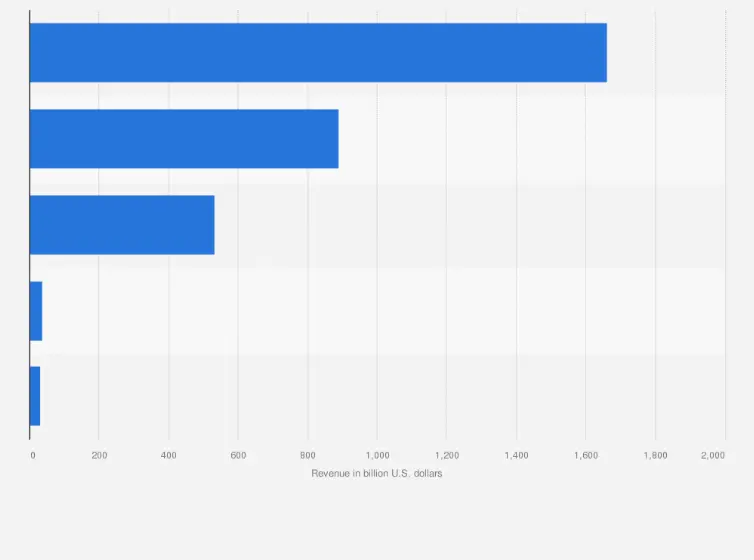
India’s E-commerce sector registers a promising opportunity where the country is expected to generate $111.40 by 2025. Similarly, in Europe, 75% of the users have bought goods or services from online platforms. And the gap will keep on reducing in the future.

Undoubtedly, building an E-commerce app and catering to the massive retailer base who have not considered E-commerce platforms is a sustainable idea. Thus, E-commerce is the future of the retail industry.
What Challenges Are Retailers Facing?
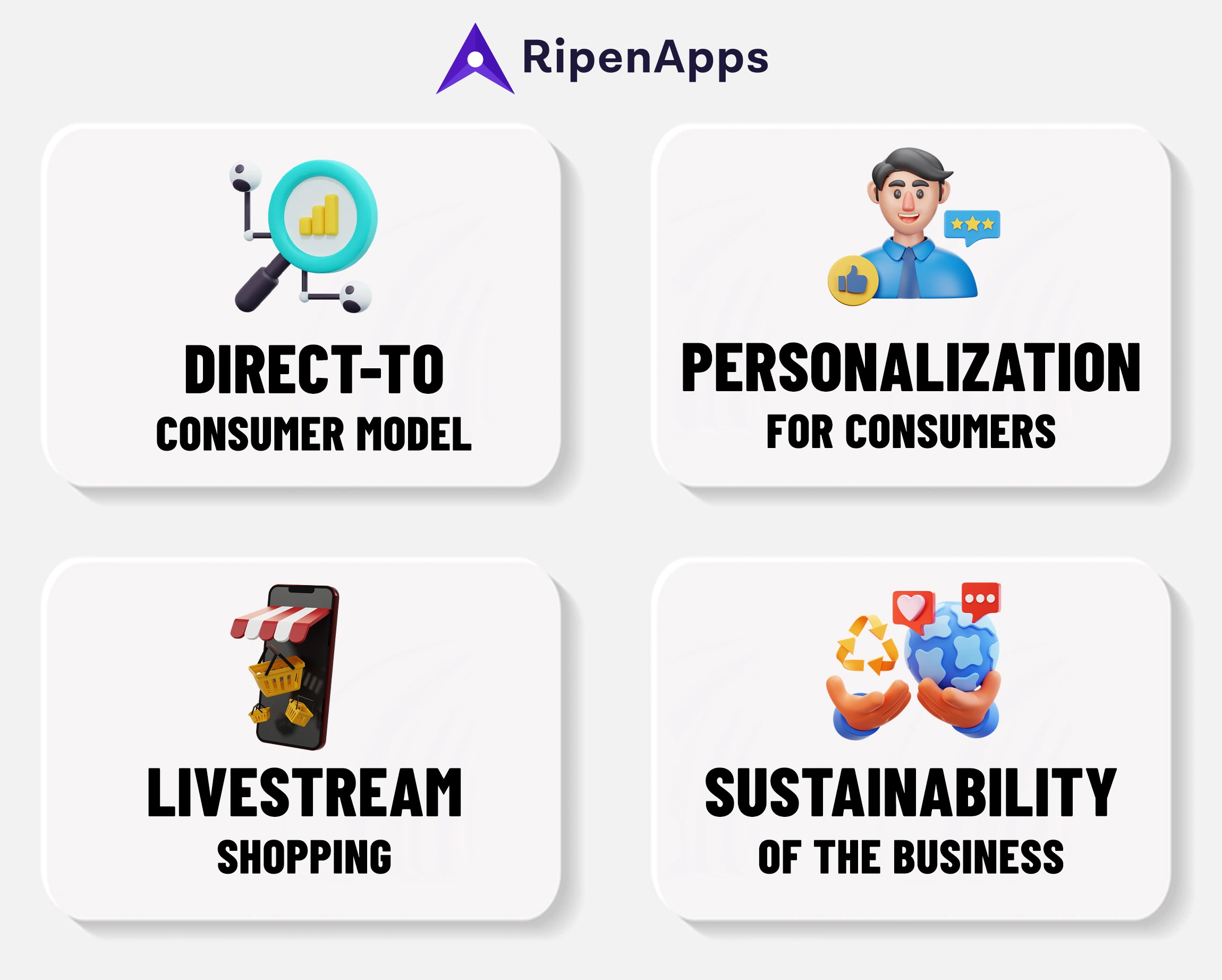
With the pandemic, if retailers want to survive in the future, one thing is clear- they have to use technology. The ones who are still following the traditional pattern face the following challenges:
Direct-To-Consumer Model
When consumers want to buy a new product from traditional retailers, they call them, visit, and make the purchase decision. However, this process takes time and requires effort from consumers. It lacks the direct-to-consumer mode, which is possible through technology. Moreover, by the end of 2023, the DTC online market will reach $213 Billion. Retailers are facing challenges in communicating directly with their customers. With this, they are also losing Generation Z, who does not prefer offline shopping.
Personalization for Consumers
Retailers want to offer a product their consumers are looking for even before they tell them. This increases a personal touch with consumers since consumers think our retailer knows us well. Additionally, these unique needs and expectations are not possible through offline channels. So, retailers have to showcase many products to sell one finally. Showcasing personalized products for specific consumers is a key challenge for retailers in 2023.
Livestream Shopping
Imagine a retailer wanting to livestream their products and sell them to customers during the event. In such a case, the retailer has to host a large event, spend a lot of money on infrastructure, and do a lot of marketing. Hence, live streaming becomes a challenge where consumers in 2023 are completely on the social and E-commerce platforms to be a part of virtual Livestream shopping.
Sustainability of the Business
Physical retail shopping is about to drop significantly shortly. Retail shop owners feel unsustainable for their business since they are connected with the future of commerce. It is high time to take your e-commerce Business to the Subsequent Level with the Power of Mobility. An E-commerce app can cater to a large base of retailers with a unique vision and solve the sustainability problem.
Two Ways You Can Contribute To The E-commerce Industry Using Digital Transformation
You have two ways through which you can contribute to the retail/commerce industry by using technology and marking your contribution and business idea. Since most of the users are switching to mobile and web apps, you shall opt for Digital Transformation using E-commerce app development.
E-commerce Marketplace App for Retailers
You can make a marketplace for retailers. It will be a multi vendor app development where you can register multiple retailers letting them sell their products online.
Retailers E-commerce App Development
Another form of E-commerce app development can be a retailer-oriented E-commerce app. Instead of building an app where multiple retailers will sell their products, you can build apps specifically for one business.
Both ways are a great idea for solving the problems faced by retailers. Obviously, you just have to perform market research, analyze requirements, approach an E-commerce app development company, and deliver the product. Even if your business is online you must consider building an Ecommerce app to gain maximum growth.
What Problems Does E-commerce App Development Solve For Retailers?
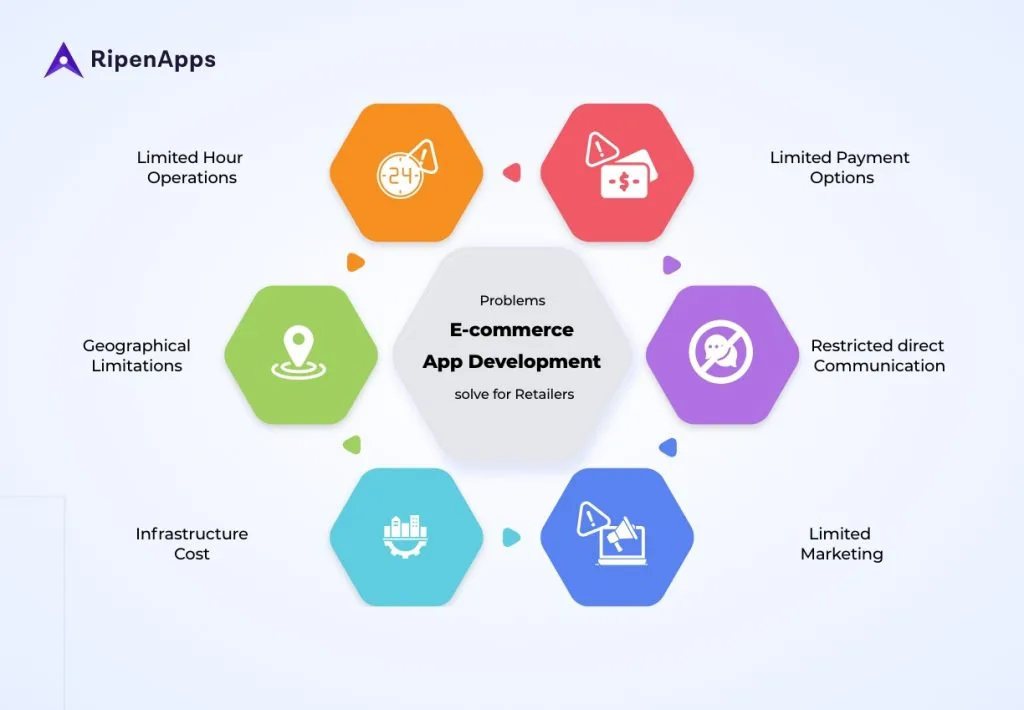
E-commerce solves multiple problems for retailers and traditional commerce. Here are some of the important ones:
- Limited Hours of Operations: With E-commerce apps, businesses can be active 24×7, selling products and attending to consumer queries.
- Geographical Limitations: With an E-commerce app, businesses can sell their products without any geographical limitations. Amazon operates worldwide.
- Infrastructure Cost: Opening a new store requires massive investments. In comparison, it is possible to add new dimensions anytime online without any infrastructure costs.
- Limited Payment Options: Online platforms can offer a diverse range of payment options to retailers as well.
- Restricted Direct Communication: The E-commerce app provides an option to let consumers communicate directly with the retailers to solve a query. And this option is available 24x7d, delivering direct communication without any limitations.
- Limited Marketing: Through online E-commerce apps, retailers can market their products easily. The advantage of SEO is another benefit that retailers gain by using E-commerce apps.
Essential Features To Add To Your E-commerce App
- Authorization: A smooth login and sign-up process with a high level of security.
- User profile: Option lets consumers and retailers update and maintain their profiles.
- Advanced search: Ensure that consumers get the accurate product according to their search.
- Payment option: Let your users take advantage of a wide range of payment options.
- Smooth checkout: Buying the products from the cart shall be Hussle free for the consumers.
What Are The Key Steps For E-commerce App Development For The Retail Industry?
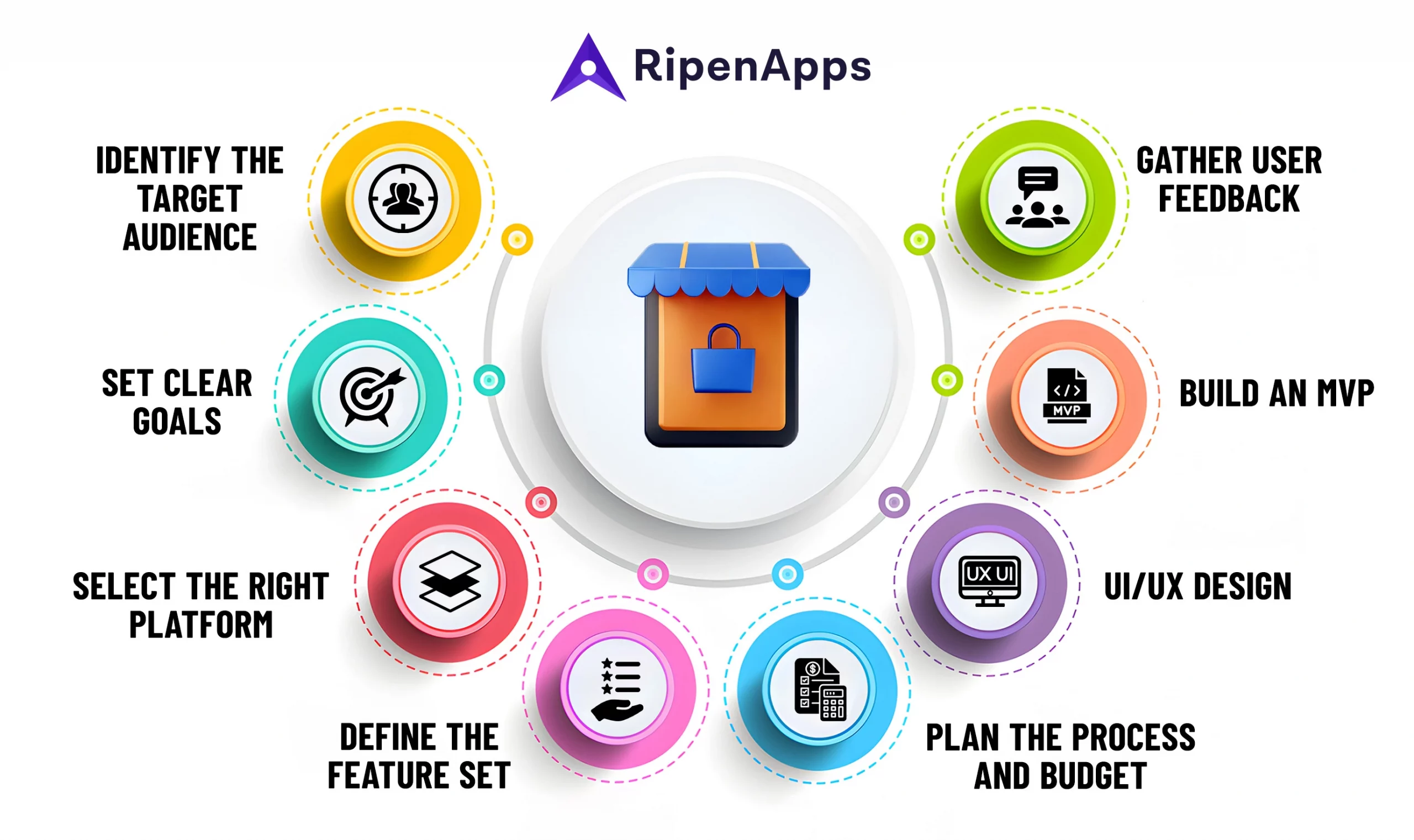
Building an E-commerce app is a complex process. The features and functionalities demanded by an E-commerce app are massive. Thus, here are the steps to build an E-commerce app, including essential features and cost.
A few key steps in e-commerce app development will solve the problems the retail industry always faces.
Step 1: Identify the Target Audience
Research your ideal customer’s age, preferences, and buying habits to ensure the mobile app meets their needs. A clear audience profile leads to a more focused and effective design.
For instance, a B2B e-commerce app for construction firms could offer one-click bulk ordering and real-time equipment delivery tracking with detailed notifications.
Step 2: Set Clear Goals
Define specific goals for your e-commerce app development that will be based on your business objectives and customer feedback. It will guide the development process and help measure success after deployment, allowing you to prioritize features and allocate resources efficiently.
For example, an eco-friendly boutique app might aim to attract environmentally conscious shoppers who are willing to buy their service.
Step 3: Select the Right Platform
Choose the appropriate platform, like iOS, Android, or both. It is based on your target audience’s device preferences. This decision impacts your app’s reach and effectiveness.
For example, if most of your audience uses iOS, prioritizing Apple’s App Store could maximize visibility and adoption.
Step 4: Define the Feature Set
Select features that align with your business goals and user preferences to ensure an effective user experience.
For example, an e-commerce app for electronics might include detailed product specs, comparison tools, and customer reviews. It will be a great opportunity for your customer to have all these features. As they can buy the best-fit product for themselves.
Step 5: Plan the Process and Budget
Define your project scope, development phases, and necessary features and expertise. Research industry standards and consult experts to estimate costs. Account for traditional expenses like tech subscriptions, marketing, and maintenance.
If outsourcing, consider nearshore partners for faster timelines and reduced costs.
Step 6: UI/UX design
The success of your e-commerce app relies heavily on its UI/UX. UX focuses on overall usability, while UI deals with interactive elements like buttons and icons.
For example, a clothing brand’s app might feature a clean, minimalistic UI and an intuitive UX for easy product filtering.
Step 7: Build an MVP
Develop a basic version of your app with essential features to quickly test your core concept in the market. For instance, a grocery delivery app’s MVP might include basic functions like adding items to a cart and simple checkout.
Step 8: Gather User Feedback
After launching the MVP, collect user feedback through surveys and testing sessions to understand its effectiveness and areas for improvement.
For example, if users find it hard to navigate product categories, use this feedback to refine the app’s design in future updates.
Step 9: Quality Testing
Test the app rigorously for bugs, performance issues, and user experience flaws through functional, usability, and security checks.
Taking an example to understand this better, testers might simulate user interactions and check payment security in a grocery delivery app. Once the app passes all tests, release it to the market.
Step 10: Customer Feedback
Continuously improve the app on user feedback, analytics, and performance metrics. Let’s take a situation, where users frequently abandon carts at checkout and streamline the process with one-click payment options.
E-commerce App Development Trends
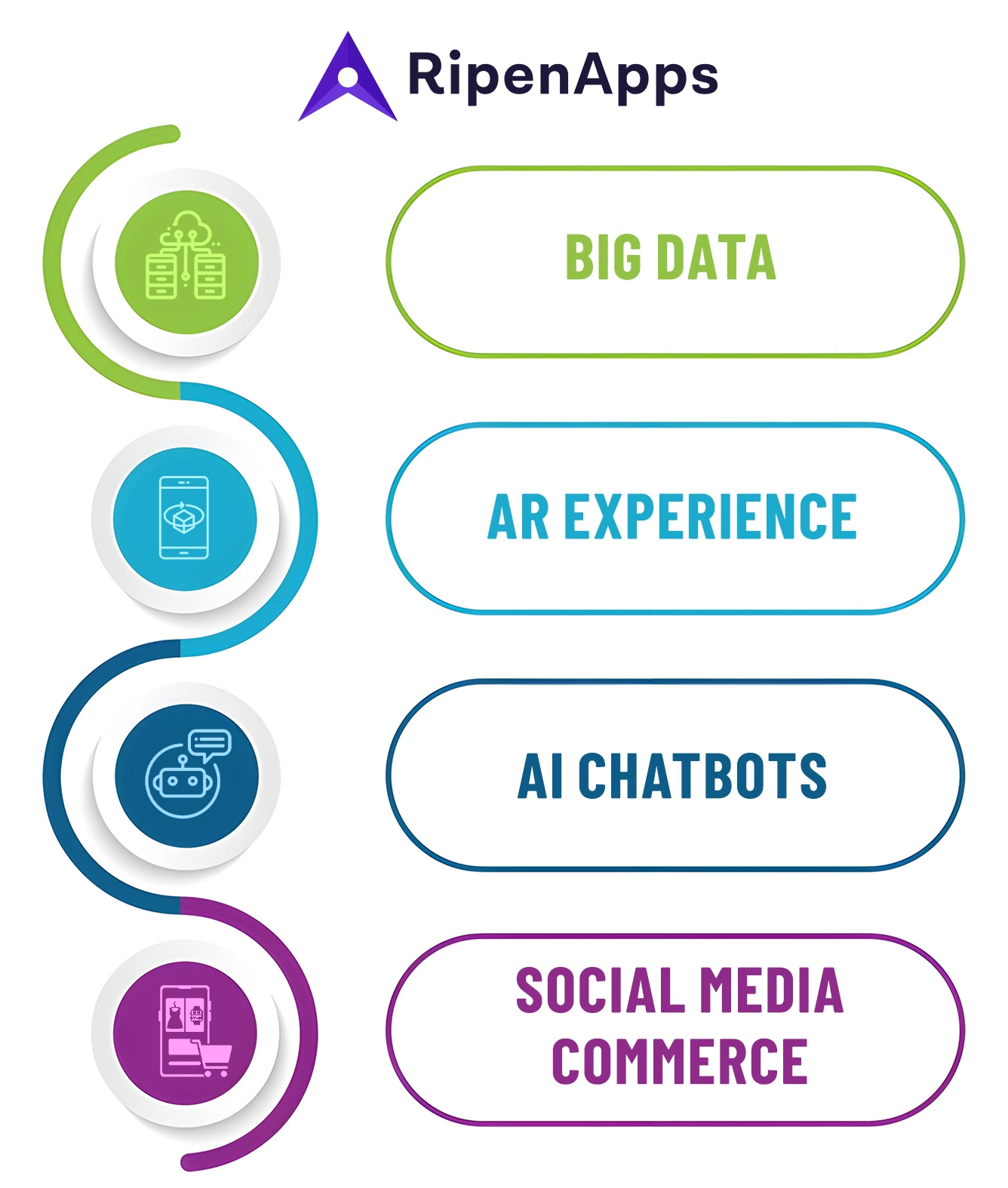
Ecommerce mobile apps have transformed the way people buy goods. But the online experience should still feel similar to in-person shopping. Let’s explore how current e-commerce trends enhance the customer experience.
Big Data
Big data algorithms are increasingly important in e-commerce app development as user numbers grow. For example, Amazon predicts what you might want to buy next and recommends products accordingly. This is possible because Amazon tracks user actions and uses big data to make personalized suggestions.
AR Experience
Augmented reality (AR) bridges the gap between online and in-store shopping. Ikea’s e-commerce app excels in AR app development, allowing customers to view their entire catalog in AR mode. This enhances the shopping experience by helping users visualize products in their own space.
AI Chatbots
AI chatbots app development enables businesses to stay connected with users without overwhelming them with information. By training chatbots on specific business scenarios, companies can offer a personalized experience that keeps users engaged and loyal, increasing retention.
Social Media Commerce
For an e-commerce company, social media is one stop for advertisement. Nowadays social media apps have online stores. E-commerce companies can list their business there and attract more customers.
So, a social media app development can be helpful for e-commerce business.
Success Stories Of Two Popular E-commerce Platforms
Amazon and Flipkart are the two largest E-commerce platforms. Amazon operates worldwide. On the other hand, Flipkart operates only in India, but the country is itself the second most populated in the world.
Amazon
Amazon’s mission is to serve consumers through online and physical stores. While doing business, the main focus stays on price and convenience to the consumers. Further, the vision of the company states that consumers can find and discover anything they want on the internet. The company has hit $514 billion in net sales worldwide.
Myntra
Myntra is on the mission and vision to deliver a hassle-free and enjoyable shopping experience to consumers. They also want to add the widest range of products to their portal. The company is India’s largest fashion and lifestyle E-commerce platform. Myntra is nearly a $600 million company.
Both companies are contributing to building a sustainable business opportunity for retailers who want to shift online.
Cost of E-commerce App Development
The cost of Ecommerce app development depends upon your requirements. As you demand more complex features, the budget of your app development increases. Additionally, the location of your ecommerce app development company is also essential to consider while determining the cost of E-commerce app development.
So, it is not possible to comment on the accurate cost of building an E-commerce app. Yet, your project can even reach $80,000, depending upon the time frame and the number of people required for your project.
Partner with RipenApps To Build An Exceptional E-commerce App
RipenApps have successfully delivered E-commerce solutions with a 90% car floating rate. We are a top E-commerce app development company raising millions of dollars in revenue for our customers through our exceptional products.
We have a dedicated team of experts who are only specialized in E-commerce development technologies.
From seamless payment integrations to customized suggestions for your customers, we have delivered the most complex features. And these complex features follow our budget-friendly, transparent communication and ethical development principles.
Whether you are a startup or an established company looking forward to solving the commerce problems around us, we are there to build and deliver your exceptional E-commerce app.
Have an E-commerce app development project for us? Email us on [email protected], and let’s discuss.
FAQs
Q1: How long does it take to build an E-commerce app?
The time frame of an E-commerce app development project depends upon the requirements. You can build an MVP in 3 months and later build your final product within 7-9 months. On average, it might take nearly a year to build an exceptional E-commerce app.
Q2: What is the cost of building an E-commerce app?
The cost of building an E-commerce app is affected by multiple factors. These are:
- Location of your E-commerce app development partner
- Size of the team on your project
- Requirements and complexities involved
The development cost might cost you from $50,000 to $150,000.
Q3: What are the steps involved in E-commerce app development?
There are a number of steps involved in E-commerce app development.
- Researching your audience and setting goals
- Choosing the right platform and tech stack
- Defining features
- Creating UI/UX design for your app
- Building MVP and collecting feedback
- Development and deployment
- Maintenance and support

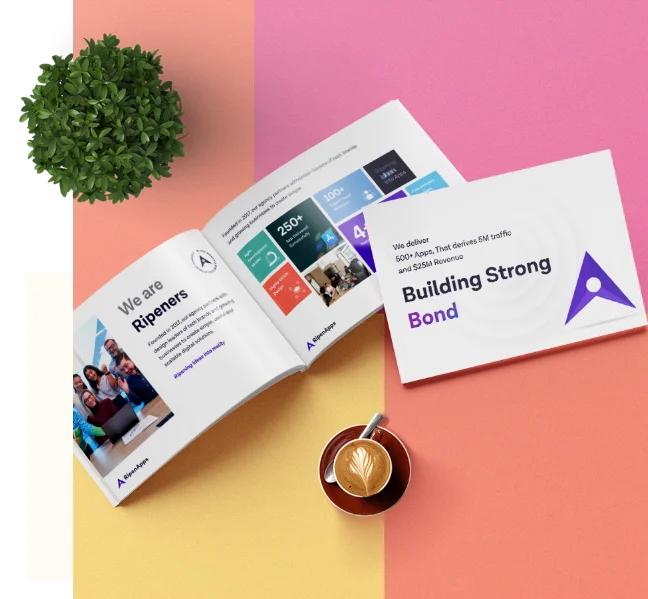
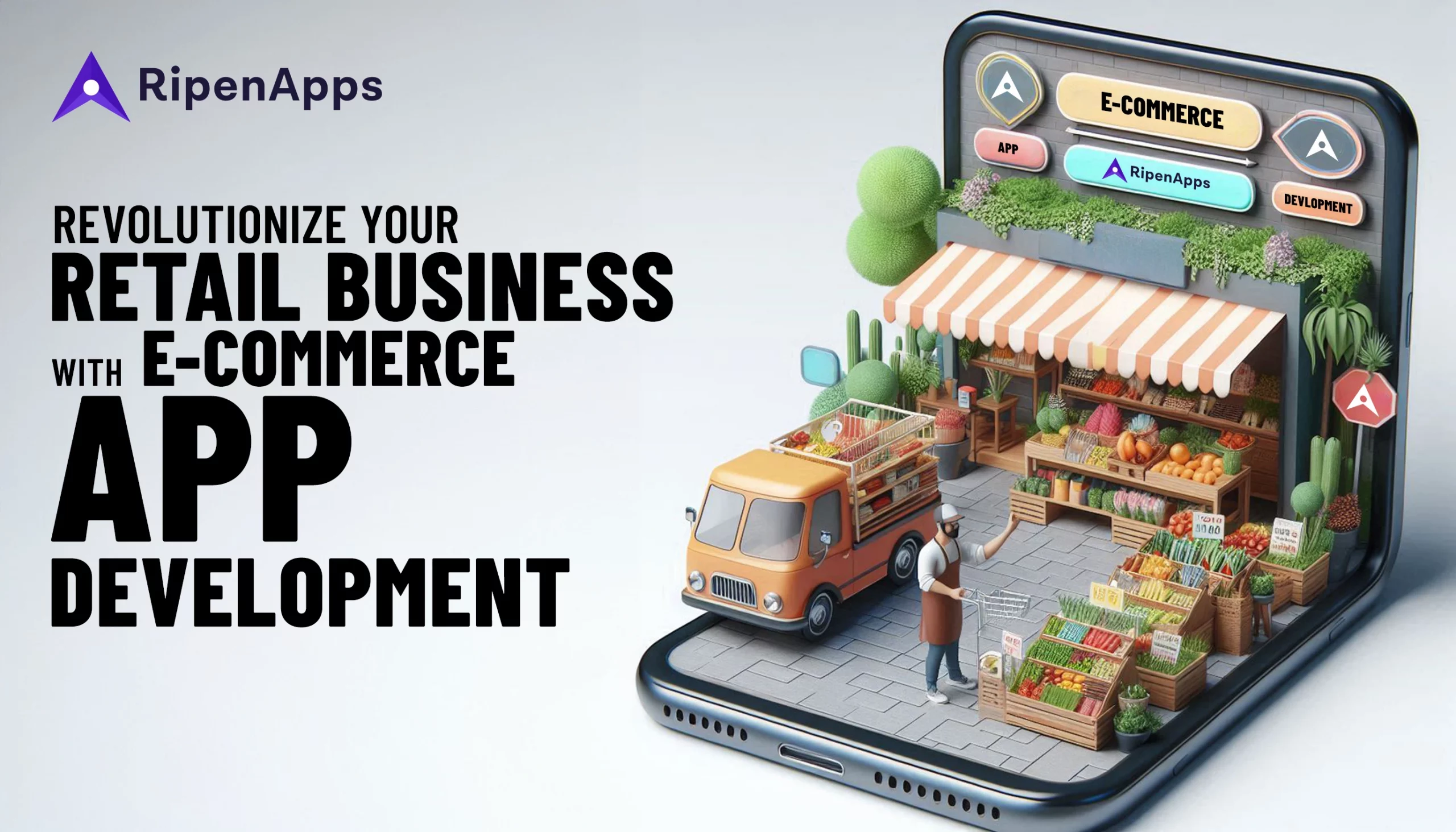





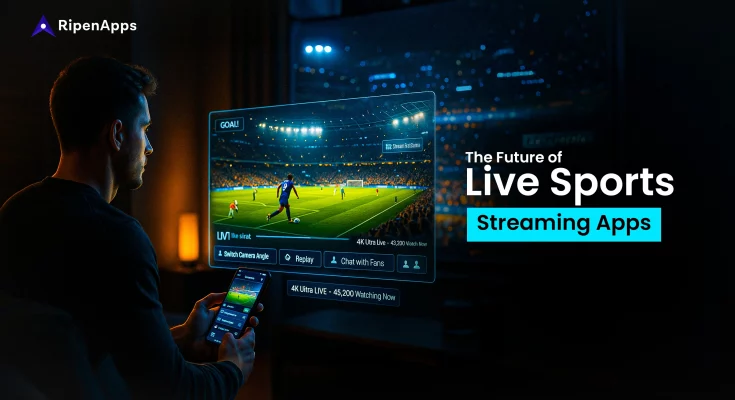
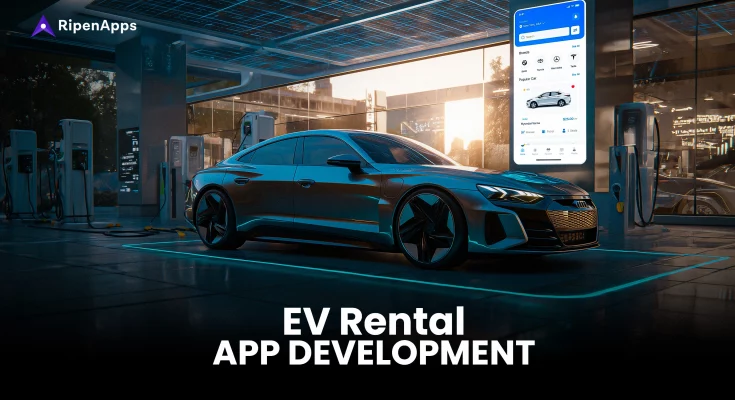
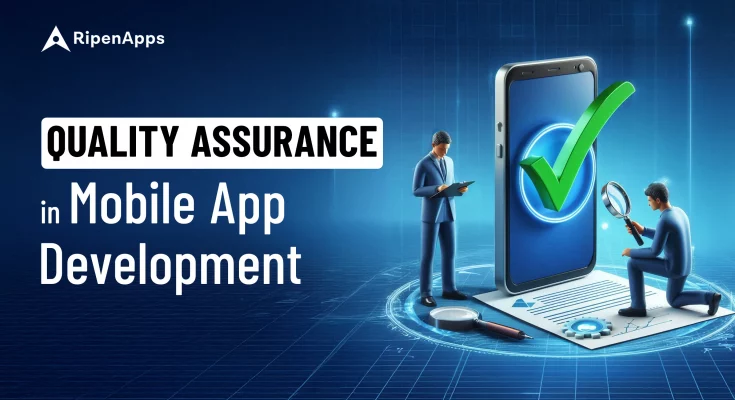

 India
India USA
USA Australia
Australia Canada
Canada UK
UK UAE
UAE
